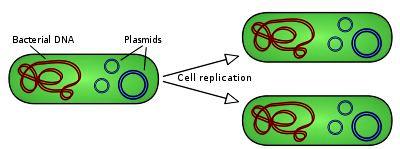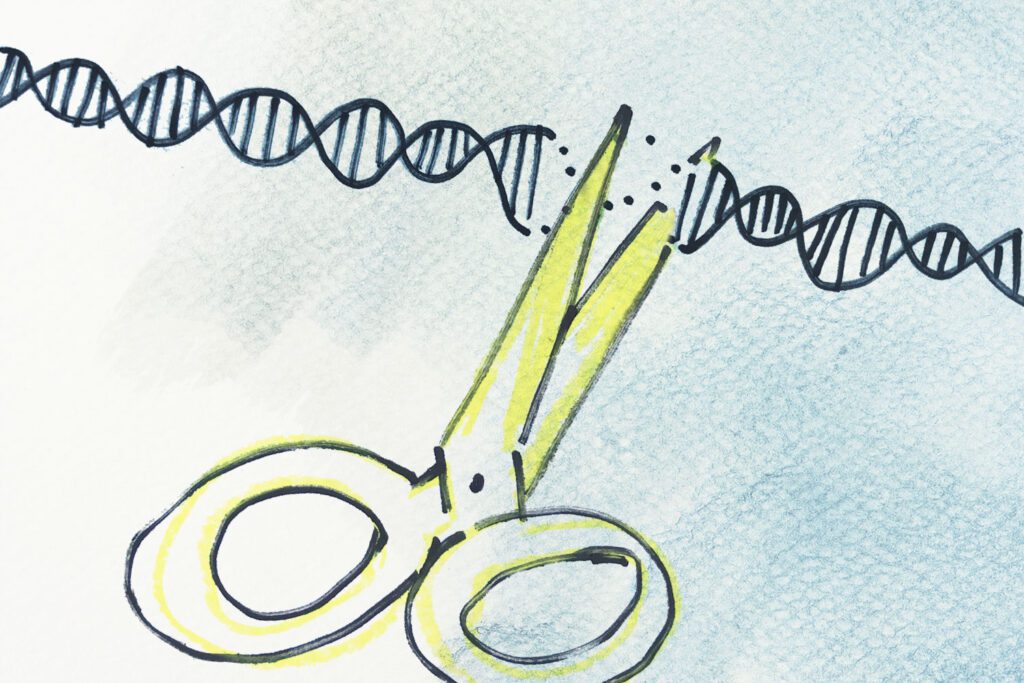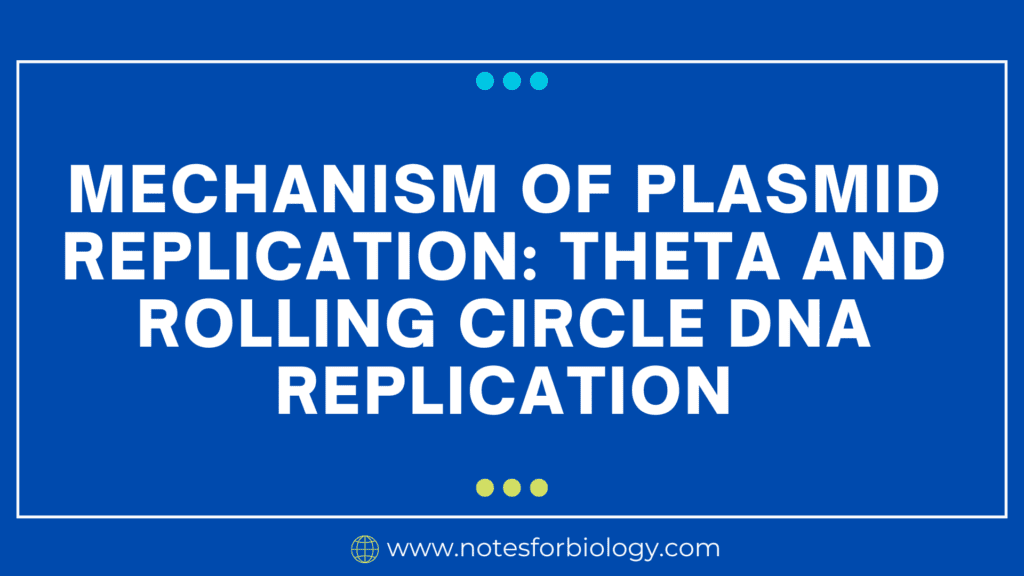Plasmids

Plasmids are small, circular DNA molecules found in bacteria and some other microorganisms. They exist independently of the main bacterial chromosome and are capable of replicating themselves.
Table of Contents
What is Plasmid replication?
Plasmid replication is the process by which these plasmids make copies of themselves within the host cell. This process is essential for maintaining a stable population of plasmids within the cell and allows for their transmission to daughter cells during division.
Plasmids are small, circular DNA molecules that exist independently of the host cell’s chromosome. Plasmid replication is crucial for their persistence and transfer, and Plasmid replication often carry genes that provide beneficial traits to the host. Plasmids replicate using two main mechanisms: theta replication and rolling circle replication.
Theta Replication

Process: In mechanism of Plasmid replication resembles the replication of the host chromosome, with a double-stranded DNA molecule serving as the template.
- Replication starts at a specific origin of replication (ori) on the plasmid.
- DNA unwinding creates a replication bubble with two replication forks.
- Each fork moves bidirectionally along the circular template.
- New DNA strands are synthesized in a 5′ to 3′ direction, following the complementary base pairing rules.
- The replication bubble expands until it meets at the opposite side of the circle, creating two complete double-stranded DNA molecules.
Advantages: This mechanism is relatively simple and efficient.
Examples: Many plasmids, including those found in bacteria, replicate via theta replication.
Rolling Circle Replication
Process: This mechanism is characterized by a single-stranded DNA molecule being used as a template.
- Replication starts at a specific origin of replication (ori) on the plasmid.
- An enzyme called endonuclease cleaves the DNA at the origin, creating a nick.
- A 3′ hydroxyl group at the nick is used as a primer by DNA polymerase to start synthesizing a new strand, using the existing strand as a template.
- The 5′ end of the nicked strand is displaced, creating a single-stranded tail.The displaced strand is used as a template to synthesize a new complementary strand.
- As replication proceeds, the single-stranded tail grows longer, forming a ‘rolling circle’ structure.
- The rolling circle can be cut at specific sites, generating multiple copies of the original plasmid.
Advantages: This mechanism is highly efficient, allowing for the production of many copies of the plasmid in a short time.
Examples: Bacteriophages and certain plasmids, such as those involved in bacterial conjugation, replicate via rolling circle replication.
Comparison of Theta and Rolling Circle Replication
comparison between Theta and Rolling cycle Replication are,
| Feature | Theta Replication | Rolling cycle Replication |
| Initiation | Bidirectional from a single origin of replication | Undirectional from a single origin of replication |
| Mechanism | DNA unwinds forming a theta structure | Circular ssDNA serves as template for DNA synthesis |
| Template | Double – stranded DNA | Circular single-stranded DNA (ssDNA) |
| Enzyme Requirement | DNA helicase, DNA polymerase | Helicase, DNA polymerase |
| Strand Synthesis | Continuous synthesis on both strands | Discontinuous synthesis on one strand |
| Products | Two daughter DNA molecules | Multiple daughter DNA molecules |
| speed | It has moderate speed | It has Rapid replication |
| Topology | Topology of Theta replication of Bidirectional replication fork | Topology of Rolling cycle Replication is Rolling cycle structure |
Key Concepts
Origin of replication (ori)
Specific DNA sequence that marks the starting point for replication.
Replication fork
Y-shaped structure formed during DNA replication where the two strands of DNA are unwound.
Endonuclease

Enzyme that cleaves the DNA at specific sites.
DNA polymerase
Enzyme that synthesizes new DNA strands.
In Conclusion
Both theta and rolling circle replication mechanisms are crucial for plasmid replication, each with its own unique advantages and applications. Understanding these mechanisms is essential for comprehending the dynamics of plasmid replication and its role in bacterial evolution and genetic engineering.
Frerquently Asked Questions (FAQ)
What is Plasmid replication?
Plasmid replication is the process by which these plasmids make copies of themselves within the host cell. This process is essential for maintaining a stable population of plasmids within the cell and allows for their transmission to daughter cells during division.
Define Plasmid in short?
Plasmids are small, circular DNA molecules found in bacteria and some other microorganisms. They exist independently of the main bacterial chromosome and are capable of replicating themselves.
What is Theta and Rolling cycle replication?
Theta and Rolling cycle replication mechanisms are crucial for plasmid replication, each with its own unique advantages and applications. Understanding these mechanisms is essential for comprehending the dynamics of plasmid replication and its role in bacterial evolution and genetic engineering.
Related Articles

